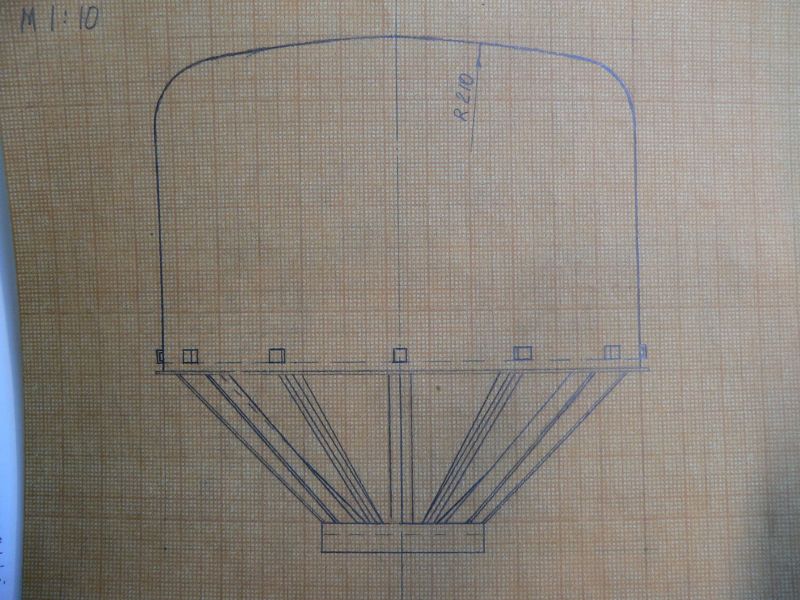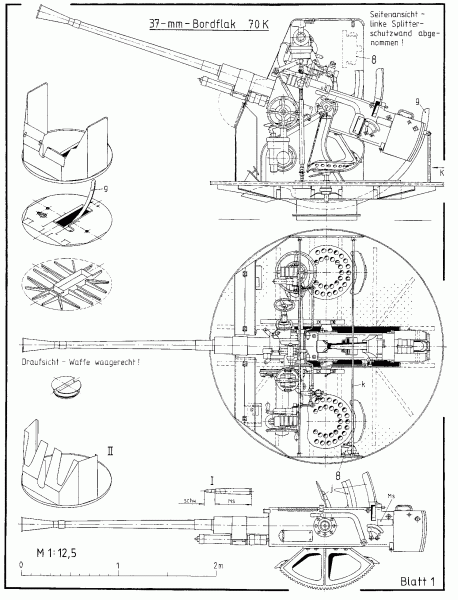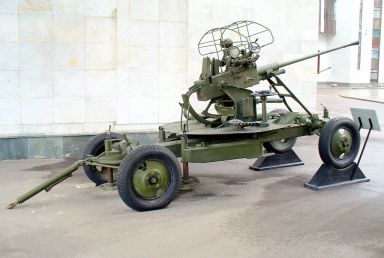 Реклама Google — средство выживания форумов :)
Реклама Google — средство выживания форумов :)
-
![[image]](https://www.balancer.ru/cache/sites/s/0/s001.radikal.ru/i193/1109/6c/128x128-crop/0fcab3d7721at.jpg)
Эсминцы пр.7, 7У
Эсминцы пр.7, 7У, чертежи, фото, описаниеТеги:
Павел35> Спасибо,пригодится.
Не знаю когда точно эти радары поставили на "семерки". Очередные модификации "С-радаров" у них уже были "в строю" с 1942г. 10-сантиметрового диапазона, 1-4 мегаГц. Могли обнаружить НК в 15 милях и ПЛ в 5 милях. Вооружали ими "малые корабли". Эсминец малым кораблем сложно обозвать, но на чертежах эсминцев(эскортных), как видно, они присутствуют.
Вот коротенько, оригинал:
S-Band Navy Search
After the 10 cm experimental breadboard demonstration, the Navy requested an S-band search radar for shipboard and airborne applications. Under the leadership of Ernest Pollard, the 50 kW SG shipboard set was given sea trials in May 1941, followed by the ASG version for large patrol aircraft and Navy blimps. With a gyro-stabilized mount, the SG could detect large ships at 15 miles and a submarine periscope at 5 miles. About 1,000 of these sets were built. ASG was designated AN/APS-2 and commonly called "George"; some 5,000 of these were built and found to be very effective in submarine detection.
A compact version of the SG for PT boats was designated the SO. These were introduced in 1942. Other variants were the SF, a set for lighter warships, the SH for large merchant vessels, and the SE and SL, for other smaller ships. The Navy also adopted versions of the Army's SCR-584 (without the M-9 unit but with gyro-stabilizers) for shipboard search radars, the SM for Fleet carriers and the SP for Escort carriers. None of these were produced in large quantities, but were highly useful in operations.
The BTL developed the SJ, an S-Band supplement for the SD meter-wave radar on submarines. The antenna for the SJ could sweep the horizon to about 6 miles with good accuracy. Late in the war, the improved SV increased detection ranges to 30 miles.
Не знаю когда точно эти радары поставили на "семерки". Очередные модификации "С-радаров" у них уже были "в строю" с 1942г. 10-сантиметрового диапазона, 1-4 мегаГц. Могли обнаружить НК в 15 милях и ПЛ в 5 милях. Вооружали ими "малые корабли". Эсминец малым кораблем сложно обозвать, но на чертежах эсминцев(эскортных), как видно, они присутствуют.
Вот коротенько, оригинал:
S-Band Navy Search
After the 10 cm experimental breadboard demonstration, the Navy requested an S-band search radar for shipboard and airborne applications. Under the leadership of Ernest Pollard, the 50 kW SG shipboard set was given sea trials in May 1941, followed by the ASG version for large patrol aircraft and Navy blimps. With a gyro-stabilized mount, the SG could detect large ships at 15 miles and a submarine periscope at 5 miles. About 1,000 of these sets were built. ASG was designated AN/APS-2 and commonly called "George"; some 5,000 of these were built and found to be very effective in submarine detection.
A compact version of the SG for PT boats was designated the SO. These were introduced in 1942. Other variants were the SF, a set for lighter warships, the SH for large merchant vessels, and the SE and SL, for other smaller ships. The Navy also adopted versions of the Army's SCR-584 (without the M-9 unit but with gyro-stabilizers) for shipboard search radars, the SM for Fleet carriers and the SP for Escort carriers. None of these were produced in large quantities, but were highly useful in operations.
The BTL developed the SJ, an S-Band supplement for the SD meter-wave radar on submarines. The antenna for the SJ could sweep the horizon to about 6 miles with good accuracy. Late in the war, the improved SV increased detection ranges to 30 miles.


У Балакина такая информация.
Прикреплённые файлы:


Для себя прикинул чертежик, по нему и сделал.
Прикреплённые файлы:


Там пока смотреть то нечего.Я ее фоткал всю в пыли.Она в 200-ом по чертежам МК, без претензий на достоверность. Выкидывать было жалко, вот и копаюсь с мелочовкой потихоньку.Думал доделаю до лета,но как всегда, начнеш копатса в информации и увязнеш. Вот зенитки зделал, сфоткал, фото увеличил и ужаснулся, а сейчас еще к ним две начал делать, заместо браунингов.
Прикреплённые файлы:


Павел35> Вот зенитки зделал, сфоткал, фото увеличил и ужаснулся...
Пламегаситель очень переразмерен и ствол коротковат.
Когда-то рисовал эту АУ (см. аттач), рядом установлена маштабная линейка. Возможно, как-то поможет.
Пламегаситель очень переразмерен и ствол коротковат.
Когда-то рисовал эту АУ (см. аттач), рядом установлена маштабная линейка. Возможно, как-то поможет.
Прикреплённые файлы:


Павел35>> Вот зенитки зделал, сфоткал, фото увеличил и ужаснулся...
Вованыч> Пламегаситель очень переразмерен и ствол коротковат.
Вованыч> Когда-то рисовал эту АУ (см. аттач), рядом установлена маштабная линейка. Возможно, как-то поможет.
А вид сверху есть? Или еще какой? Хотелось бы посмотреть, если не секрет.
Вованыч> Пламегаситель очень переразмерен и ствол коротковат.
Вованыч> Когда-то рисовал эту АУ (см. аттач), рядом установлена маштабная линейка. Возможно, как-то поможет.
А вид сверху есть? Или еще какой? Хотелось бы посмотреть, если не секрет.


Рисунок хороший, скинул себе в копилку.Насчет всех огрехов - я вкурсе. Начинал делать еще в 90-х, переделывать не стал.Просто поставил себе задачу доделать,чтобы не валялась,и подарю.
Прикреплённые файлы:


Corvet> А вид сверху есть? Или еще какой? Хотелось бы посмотреть, если не секрет.
Да какой там секрет ? Вид сверху не делал, рисовал вот с этого исходника (см. аттач).
? Вид сверху не делал, рисовал вот с этого исходника (см. аттач).
Да какой там секрет
 ? Вид сверху не делал, рисовал вот с этого исходника (см. аттач).
? Вид сверху не делал, рисовал вот с этого исходника (см. аттач).
Прикреплённые файлы:


Павел35> Насчет всех огрехов - я в курсе. Начинал делать еще в 90-х, переделывать не стал.Просто поставил себе задачу доделать,чтобы не валялась,и подарю.
Не примите за критику, просто в глаза бросилось. Если не затруднит - по окончании строительства покажете результат?
P.S. небольшое уточнение: на Вашем рисунке 37-мм АУ - щит уже послевоенный (по сравнению со щитом "обр.1943 г." там есть отличия)
Не примите за критику, просто в глаза бросилось. Если не затруднит - по окончании строительства покажете результат?
P.S. небольшое уточнение: на Вашем рисунке 37-мм АУ - щит уже послевоенный (по сравнению со щитом "обр.1943 г." там есть отличия)


Павел35> Там пока смотреть то нечего.Я ее фоткал всю в пыли.Она в 200-ом по чертежам МК,
Я тоже по чертежам М-К делал,правда Стойкого,тоже в 90-х и тоже в 200,поэтому очень интересно Ваш посмотреть.Мой,к сожалению,до нынешних времен "не дожил".
Я тоже по чертежам М-К делал,правда Стойкого,тоже в 90-х и тоже в 200,поэтому очень интересно Ваш посмотреть.Мой,к сожалению,до нынешних времен "не дожил".


Вованыч, небойтесь критиковать, я критику принимаю и не обижаюсь.Она помогает развиваться.Кстати по щитам, очень интересуют различия, на будущее.
Прикреплённые файлы:


У меня фото только двух орудий.
Прикреплённые файлы:


Павел35> Кстати по щитам, очень интересуют различия, на будущее.
Вот 70-К со щитом т.н. "военного" обр.
Вот 70-К со щитом т.н. "военного" обр.
Прикреплённые файлы:


Павел35> Насчет корпуса, забыл пояснить что он пластик-из набора.
Мой был полностью самодельный ...
...
Мой был полностью самодельный
 ...
...


Вованыч, спасибо.А нет ли случаем информации по дугам,куда крепились и т.п.? Даже вроде на фото 7-ок мелькали.
Прикреплённые файлы:


Corvet>> А вид сверху есть? Или еще какой? Хотелось бы посмотреть, если не секрет.
Вованыч> Да какой там секрет ? Вид сверху не делал, рисовал вот с этого исходника (см. аттач).
? Вид сверху не делал, рисовал вот с этого исходника (см. аттач).
Спасибо, ценные схемки. Я таких в сети не видел..., а может плохо смотрел.
Вованыч> Да какой там секрет
 ? Вид сверху не делал, рисовал вот с этого исходника (см. аттач).
? Вид сверху не делал, рисовал вот с этого исходника (см. аттач).Спасибо, ценные схемки. Я таких в сети не видел..., а может плохо смотрел.


Павел35> Рисунок хороший, скинул себе в копилку.Насчет всех огрехов - я вкурсе. Начинал делать еще в 90-х, переделывать не стал.Просто поставил себе задачу доделать,чтобы не валялась,и подарю.
И вам спасибо, Павел.
И вам спасибо, Павел.


Павел35> Вованыч, спасибо.
Не за что. Рад помочь.
Павел35> А нет ли случаем информации по дугам,куда крепились и т.п.?
Это предохранительный каркас (рамка) прицела. К сожалению, детальных фото этого девайса у меня нет. Но подозреваю, что можно смело заимствовать с "сухопутной" версии 61-К.
Не за что. Рад помочь.
Павел35> А нет ли случаем информации по дугам,куда крепились и т.п.?
Это предохранительный каркас (рамка) прицела. К сожалению, детальных фото этого девайса у меня нет. Но подозреваю, что можно смело заимствовать с "сухопутной" версии 61-К.


Вованыч> подозреваю, что можно смело заимствовать с "сухопутной" версии 61-К.
Как вариант (см. аттач)
Как вариант (см. аттач)
Прикреплённые файлы:


 Реклама Google — средство выживания форумов :)
Реклама Google — средство выживания форумов :)
Павел35>> Кстати по щитам, очень интересуют различия, на будущее.
Вованыч> Вот 70-К со щитом т.н. "военного" обр.
М-дя. Вот в "сотке" я их сваял с обоими типами щитов и без них. А вот как тоже самое сваять в "двухсотке"
Вот в "сотке" я их сваял с обоими типами щитов и без них. А вот как тоже самое сваять в "двухсотке"  Может кто-нибудь натыкался на травленку для 70К? Шепните,плиииз. Я никому канэшно.....
Может кто-нибудь натыкался на травленку для 70К? Шепните,плиииз. Я никому канэшно..... 

Вованыч> Вот 70-К со щитом т.н. "военного" обр.
М-дя.
 Вот в "сотке" я их сваял с обоими типами щитов и без них. А вот как тоже самое сваять в "двухсотке"
Вот в "сотке" я их сваял с обоими типами щитов и без них. А вот как тоже самое сваять в "двухсотке"  Может кто-нибудь натыкался на травленку для 70К? Шепните,плиииз. Я никому канэшно.....
Может кто-нибудь натыкался на травленку для 70К? Шепните,плиииз. Я никому канэшно..... 



Copyright © Balancer 1997..2024
Создано 20.02.2007
Связь с владельцами и администрацией сайта: anonisimov@gmail.com, rwasp1957@yandex.ru и admin@balancer.ru.
Создано 20.02.2007
Связь с владельцами и администрацией сайта: anonisimov@gmail.com, rwasp1957@yandex.ru и admin@balancer.ru.
 Павел35
Павел35

 инфо
инфо инструменты
инструменты kkg1960
kkg1960



















 boris2005
boris2005

